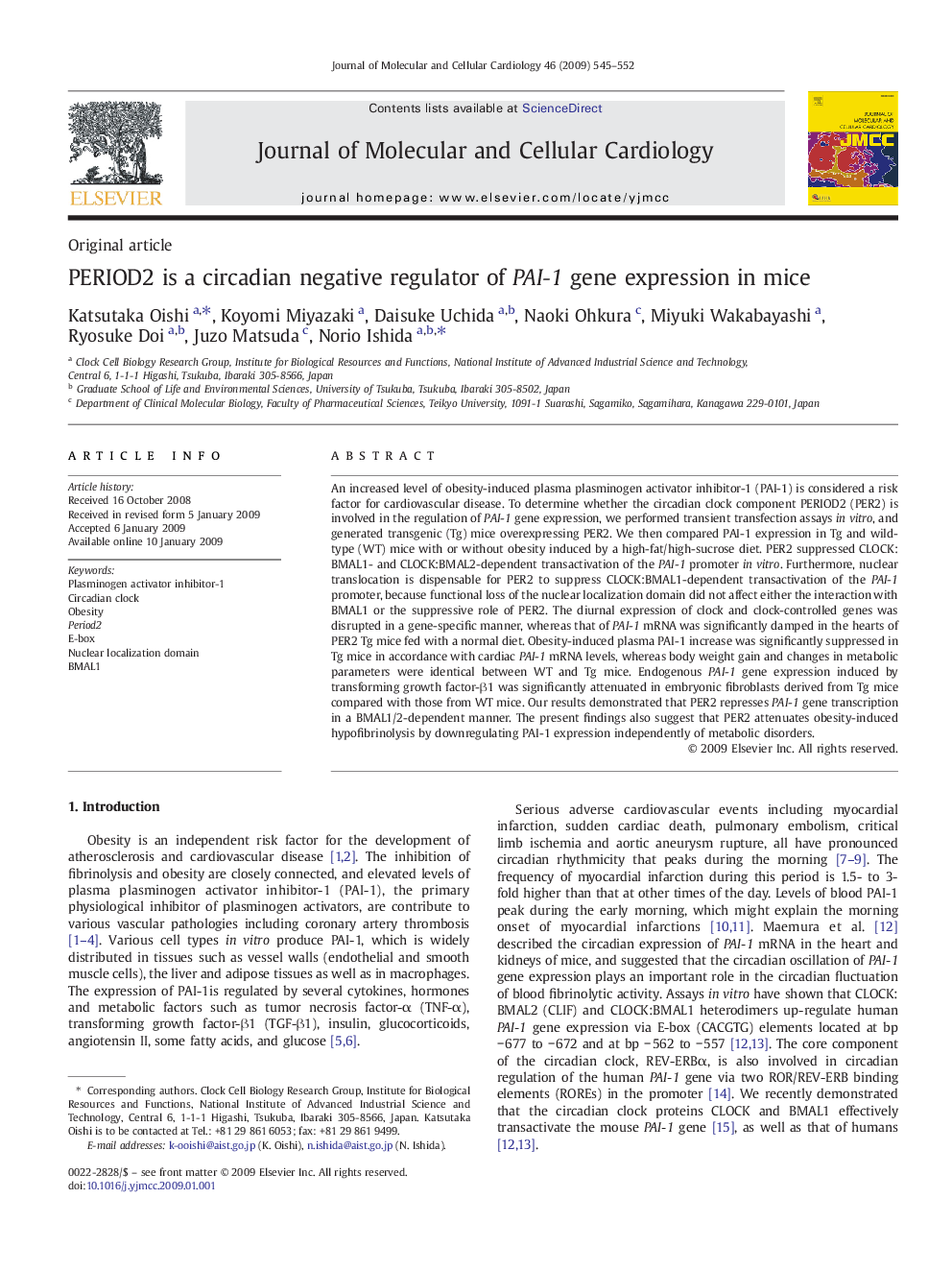| Article ID | Journal | Published Year | Pages | File Type |
|---|---|---|---|---|
| 2191394 | Journal of Molecular and Cellular Cardiology | 2009 | 8 Pages |
An increased level of obesity-induced plasma plasminogen activator inhibitor-1 (PAI-1) is considered a risk factor for cardiovascular disease. To determine whether the circadian clock component PERIOD2 (PER2) is involved in the regulation of PAI-1 gene expression, we performed transient transfection assays in vitro, and generated transgenic (Tg) mice overexpressing PER2. We then compared PAI-1 expression in Tg and wild-type (WT) mice with or without obesity induced by a high-fat/high-sucrose diet. PER2 suppressed CLOCK:BMAL1- and CLOCK:BMAL2-dependent transactivation of the PAI-1 promoter in vitro. Furthermore, nuclear translocation is dispensable for PER2 to suppress CLOCK:BMAL1-dependent transactivation of the PAI-1 promoter, because functional loss of the nuclear localization domain did not affect either the interaction with BMAL1 or the suppressive role of PER2. The diurnal expression of clock and clock-controlled genes was disrupted in a gene-specific manner, whereas that of PAI-1 mRNA was significantly damped in the hearts of PER2 Tg mice fed with a normal diet. Obesity-induced plasma PAI-1 increase was significantly suppressed in Tg mice in accordance with cardiac PAI-1 mRNA levels, whereas body weight gain and changes in metabolic parameters were identical between WT and Tg mice. Endogenous PAI-1 gene expression induced by transforming growth factor-β1 was significantly attenuated in embryonic fibroblasts derived from Tg mice compared with those from WT mice. Our results demonstrated that PER2 represses PAI-1 gene transcription in a BMAL1/2-dependent manner. The present findings also suggest that PER2 attenuates obesity-induced hypofibrinolysis by downregulating PAI-1 expression independently of metabolic disorders.
